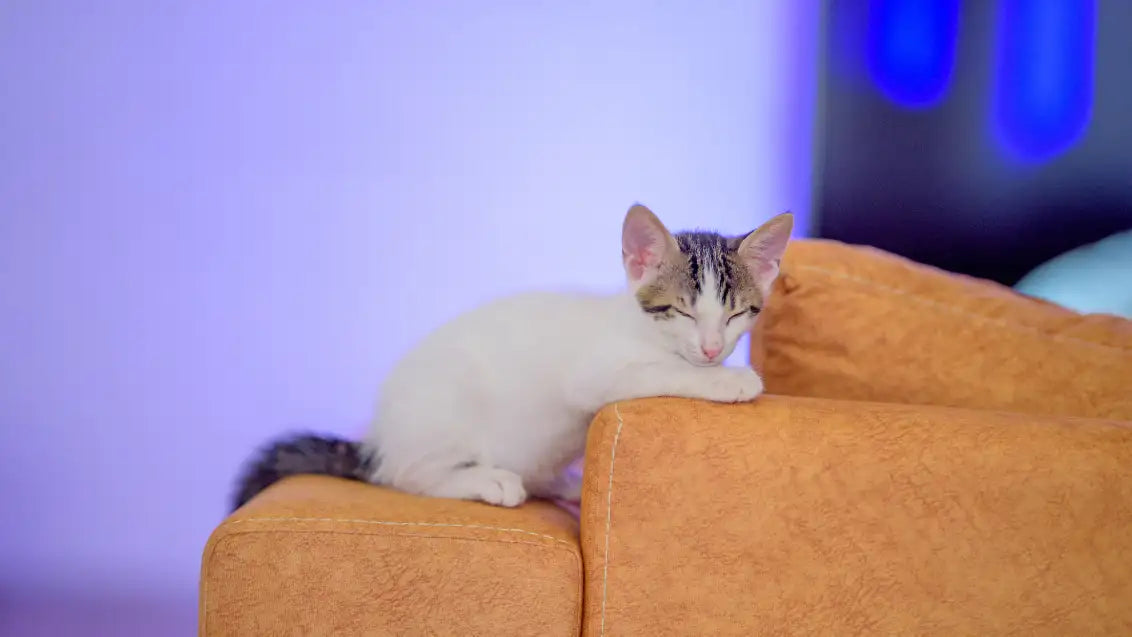
How can you stop a cat from scratching the furniture?
You walk into your living room, coffee in hand, only to find your once-elegant sofa fraying at the corners—again. Your feline friend is lounging nearby, completely unfazed. If this sounds familiar, you're not alone. One of the most common challenges cat owners face is how to stop a cat from scratching furniture.
Here’s the truth: your cat isn’t being naughty. Scratching is a deeply ingrained instinct—one that serves important physical and emotional purposes. The key isn’t stopping it altogether (you can’t), but rather redirecting it in a way that satisfies your cat and saves your furniture. Let’s dive into practical, compassionate solutions.
Why Do Cats Scratch Furniture?

Scratching isn’t misbehavior—it’s survival. Here’s why cats do it:
- To sharpen and clean their claws – Scratching removes the dead outer layer of claws.
- To stretch and flex – It's a full-body exercise that feels good.
- To mark territory – Cats have scent glands in their paws. Scratching leaves both a visual and olfactory signal.
- To relieve stress or excitement – Scratching is a way to release pent-up energy or anxiety.
Understanding this helps us redirect the behavior, not punish it.
Offer Scratch-Friendly Alternatives
The fastest way to stop your cat from scratching your furniture? Give them something better to scratch.
Here are some tried-and-tested options:
- Vertical scratching posts: Great for cats that love to stretch upward. Choose tall, sturdy ones covered in sisal rope or carpet.
- Horizontal scratch pads: Ideal for cats who prefer a ground-level approach.
- Incline scratchers: A slanted option that’s fun for kittens and adults alike.
- Cat furniture with built-in scratching surfaces: These can blend with your home decor and serve multiple purposes.
Make Their Scratchers Irresistible

It’s not enough to have a scratching post—it has to compete with your couch!
Here’s how to turn a scratcher into your cat’s new obsession:
- Rub catnip into the material (or use a catnip spray).
- Dangle a toy from the top or side.
- Place treats or dry kibble near or on the scratcher.
- Use pheromone sprays like Feliway nearby to promote calm behavior.
When your cat uses the post, praise them immediately with petting, treats, or a soothing voice.
Protect Furniture with Gentle Deterrents
While you're retraining your cat, defend your furniture using humane deterrents:
- Double-sided tape (like Sticky Paws): Cats hate the sticky feel.
- Plastic couch shields: These protect high-target areas like arms and corners.
- Citrus-scented sprays: Most cats dislike lemon or orange smells.
- Slipcovers or throws: Cover beloved scratch zones temporarily.
These tools work best when paired with a positive alternative nearby (like a new scratcher).
Keep Their Claws Trimmed

A regular claw-trimming routine reduces damage and makes scratching less satisfying.
How to trim your cat’s nails:
- Use cat-specific clippers (never human nail cutters).
- Press gently on the paw pad to extend the claws.
- Clip only the sharp tip—avoid the pink "quick" which contains nerves.
- Start with just a few claws at a time and build trust with rewards.
If trimming is difficult, your vet or groomer can help every few weeks.
Consider Soft Nail Caps
If you're still struggling and worried about your furniture, soft nail caps like Soft Paws can help.
- They’re small vinyl caps glued over your cat’s claws.
- They’re painless, non-toxic, and fall off naturally as claws grow.
- Best for cats who are hard to train or if furniture damage is severe.
Use only under vet guidance and avoid using them as a long-term replacement for training.
Enrich Their Environment

A bored or anxious cat is a destructive cat. Keep their paws and mind busy with:
- Interactive toys (feathers, balls, motorized toys)
- Puzzle feeders to turn mealtime into playtime
- Window perches or bird feeders for visual stimulation
- Cat trees, climbing shelves, and tunnels
Daily play sessions (at least 10–15 minutes) are crucial for indoor cats.
Use Positive Reinforcement Only
Punishing a cat for scratching—by yelling, spraying water, or clapping—will backfire. It may cause fear, anxiety, and even more destructive behavior.
Instead, use redirection:
- Interrupt calmly with a soft “ah-ah”
- Gently pick them up and place them near the scratcher
- Praise immediately when they use it
Training your cat is about consistency and trust—not discipline.
Temporarily Restrict or Block Access

While training your cat, make off-limits zones less tempting:
- Move furniture away from walls or block access with baby gates.
- Use furniture guards or rolled-up yoga mats as barriers.
- Try motion-sensing air sprays to protect high-risk areas (use sparingly and only if necessary).
Once your cat is trained, you can remove these aids.
Be Patient and Consistent
- Cats aren’t being bad—they’re being cats
- Redirect instead of punishing
- Make the right thing easy and rewarding
With time, you’ll see your furniture spared and your cat happier.
Bonus: Give them a pop animal art for their cat house!
FAQs
Summing Up!
Scratching is a normal part of cat behavior—but that doesn’t mean your furniture has to suffer. By understanding why cats scratch and offering appropriate outlets, you can create a peaceful coexistence between your kitty’s claws and your couch.
From scratchers and nail trims to environmental enrichment, every solution focuses on channeling your cat’s instincts—not suppressing them. With some patience, the right tools, and a bit of feline psychology, you can protect your home and strengthen your bond with your furry friend.
Looking for the best Landscape by numbers painting kits? Explore petsbynumber?

